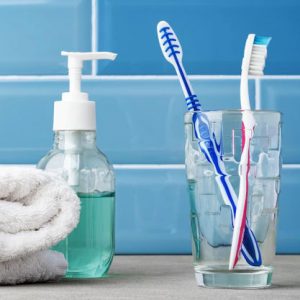Maintaining good oral hygiene is important for keeping your teeth looking white and bright. One of the best things you can do at home to get whiter teeth is just to replace your toothbrush every three to four months. In this article, we’ll explain why replacing your toothbrush can help to keep your teeth looking whiter and the other benefits.
As you brush your teeth, the bristles on your toothbrush can become frayed and worn. This can make it difficult for the brush to effectively clean your teeth, as the bristles may not be able to reach all the crevices in your mouth. Replacing your toothbrush regularly can ensure that you always have a brush with fresh, firm bristles to effectively clean your teeth and remove stains.
New bristles are able to remove plaque and bacteria more effectively, which can help to prevent tooth decay and gum disease. By replacing your toothbrush regularly, you can keep your mouth clean and healthy.
As the bristles on your toothbrush become frayed and worn they will bend outwards making them less effective at removing plaque and bacteria from your teeth. This can lead to a build-up of these substances, which can cause them to look yellow or discoloured.
On the other hand, using a new toothbrush with fresh straight bristles can help to remove plaque and bacteria more effectively, which can help to keep your teeth looking white. In addition, many modern toothbrushes come with special features, such as whitening bristles or a built-in whitening agent, that can help to brighten your teeth.
It’s important to note that while replacing your toothbrush can help to keep your teeth looking white, it’s not a substitute for regular dental cleanings and good oral hygiene habits. In order to maintain a bright, healthy smile, it’s important to brush and floss regularly and visit your dentist for regular cleanings. However, replacing your toothbrush every three to four months can be an important part of maintaining a bright, white smile.
Other benefits of replacing your toothbrush regularly
Over time, bacteria can build up on your toothbrush, even if you rinse it thoroughly after use. If you’ve had a cold this can lead to re-infection if you brush your teeth with a contaminated toothbrush. Replacing your toothbrush every few months can help to reduce the risk of bacterial buildup and keep your mouth clean especially after you’ve been ill.
Using a fresh toothbrush can also be more comfortable than using an old, frayed brush. New bristles are softer and less likely to cause irritation or discomfort in your mouth.
In addition to replacing your toothbrush every three to four months, it’s also important to properly care for your toothbrush to extend its lifespan. This includes rinsing it thoroughly after use and storing it in an upright position to allow it to air dry. It’s also a good idea to keep your toothbrush away from other toothbrushes to avoid cross-contamination.
Overall, replacing your toothbrush every three to four months is an important part of maintaining good oral hygiene. By following this recommendation, you can keep your mouth clean, reduce the risk of bacterial buildup, and help to maintain whiter teeth at home.


